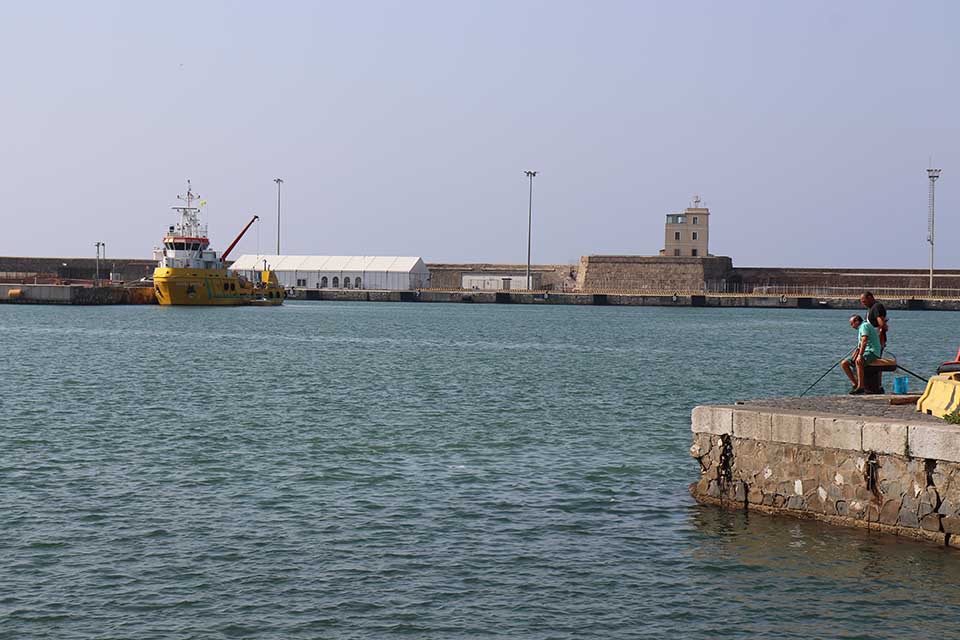The ancient port of Civitavecchia was built at the behest of Emperor Trajan around 106 AD with the idea of providing Rome with another safe haven after the silting up of the Tiber estuary.
The architect Apollodoro was commissioned to build a large, almost circular basin in the shape of an amphitheatre with a diameter of about 500 meters.
On the sides of the amphitheatre there were two large piers, one curved and one straight, which ended with two small forts called Bicchiere and Lazzaretto.
The shapes of the piers can be recognized while the last stretch of the pier is preserved with the final tower of the Lazzaretto, which took its name from its use as a shelter for plague patients from the Renaissance to the 1800s.
In the Roman pier you can admire the engineering mastery of the Romans with the construction of tunnels under the pier that served to keep the port area connected to the sea to avoid the submersion of the dock and to keep the seabed clean.
In order to protect the port, an artificial island of rectilinear form was built in front of the mainland at a distance of about 500 meters and was built with the excavation blocks from the dock itself. The island ideally closed off the port and at its ends there were forts while at the centre the great lighthouse was positioned.
The port had a depth of about 6 meters and occupies a total area of about 20 hectares.
The port was certainly the commercial and social heart of the city and for this reason temples were built in the imperial period, one of which was dedicated to the God Neptune with a large bronze statue known about because of the discovery of one of his arms.
To carry out the administrative and social functions, a large basilica with a size of 100 x 38 meters was built. During the middle age, a fortress was built over the old Roman warehouses.
A large Roman cistern was found about a kilometer from the port, inside the military zone of the former Scuola di Guerra (now called Ce.Si.Va.).
The dock is perhaps the area of the port that best reflects the original Roman character and every so often parts of columns or Roman statues are recovered from its bottom. One of the papal embellishments is the bronze lion heads that support the mooring with their fangs.
After the fall of the Roman Empire, the area and the port of Civitavecchia saw a series of different controllers and changes of hands starting from the destruction of Civitavecchia (cemtumcellae) by the Saracens.
Then the port was disputed between the papacy and the various communal powers until its definitive entry as part of the Papal States around 1400 when the pope bought the area from the Prefects of Vico for 4000 florins.
From this fifteenth century it definitively entered under the papal dominion which reorganized the port particularly to adapt it to the needs of trade after the discovery of the alum mines in the area of Allumiere.
The popes respected the Roman engineering structure and their work was above all a reconstruction of some defensive structures after the destruction by the Saracens before the millenium.
The first to build a fortress was Pope Collistus III. The popes entrusted the works to great architects like Bramante, Bernini, Sangallo and Michelangelo who built forts and walls that are still a valuable element of the port.
In 1616, Pope Paul V had a new lighthouse built which, properly modernized, is still in operation. Then in the eighteenth century, Pope Gregory XVI had the Fortino Gregoriano (Gregorian Fort) built.
The popes also reinforced a wall protection system for the port that served both as protection from attacks and administratively for the definition of the port area.
Thus the Roman port survived for almost two millennia until the Allied bombing of the Second World War that largely destroyed it.







Follow us